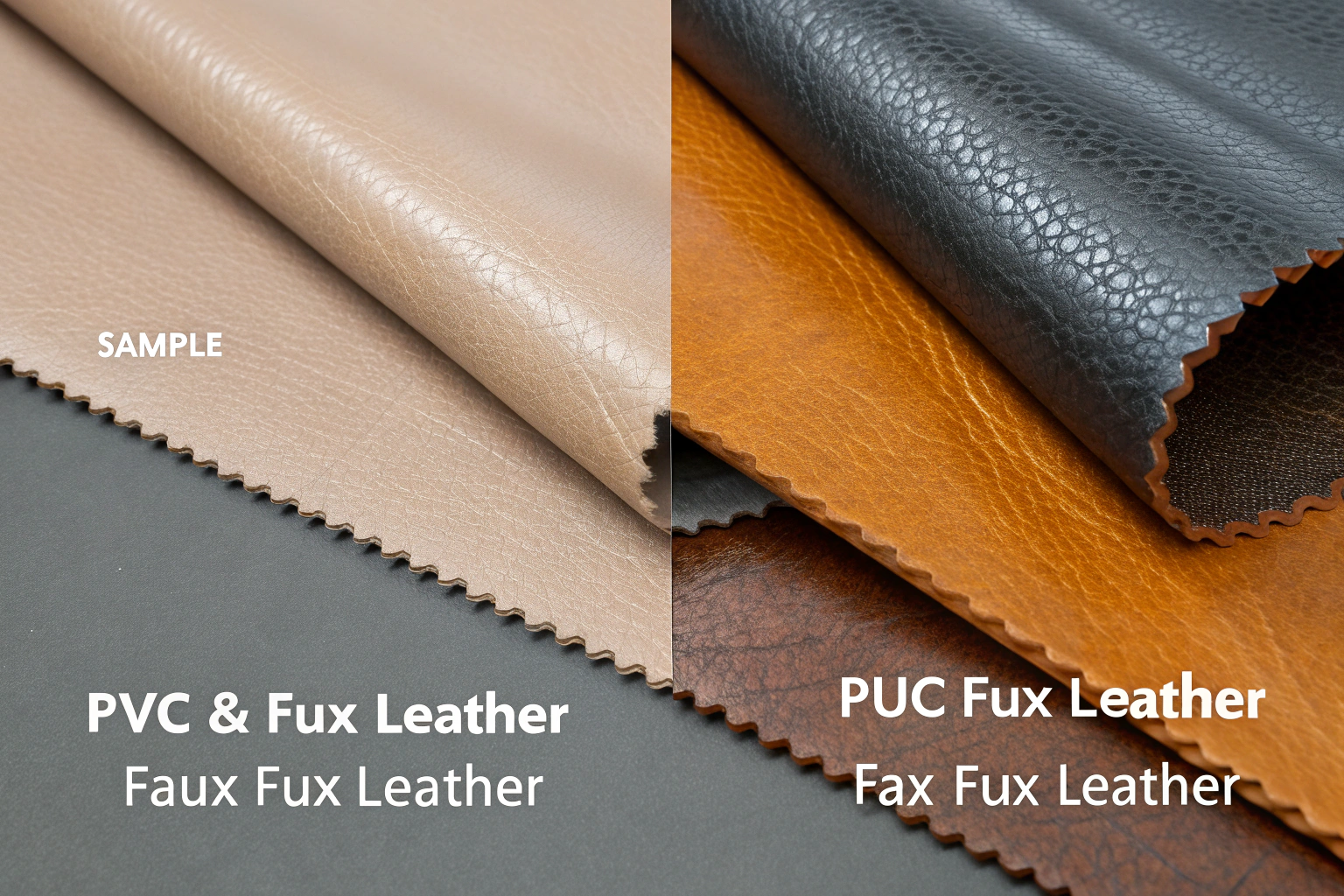As a fabric supplier with over two decades in the textile hub of Keqiao, I frequently get asked by apparel brands and designers about faux leather. Many want the luxurious look and feel of leather but are committed to ethical and sustainable sourcing. The two most common options are PVC and PU, but understanding their differences is crucial for making the right choice for your clothing line. This choice impacts not just the aesthetics and durability of your garments, but also their comfort, cost, and environmental footprint.
The fundamental difference between PVC and PU faux leather lies in their chemical composition and structure. PVC (Polyvinyl Chloride) is a plastic-based fabric coated with a plasticizer, making it stiff and durable. PU (Polyurethane) is a polymer coating applied to a fabric base, resulting in a softer, more flexible material that closely mimics genuine leather. For apparel, PU is generally preferred for its superior breathability, softness, and realism, while PVC is often chosen for applications requiring high durability and water resistance at a lower cost. Your final decision should balance performance, aesthetics, ethics, and budget.
Navigating the world of synthetic leather can be complex. Let's break down the key characteristics of both materials to help you select the perfect fabric for your next collection.
What are the pros and cons of PVC faux leather?
When you're developing a new line of jackets, skirts, or accessories, cost and durability are often top of mind. PVC faux leather has been a staple in the fashion industry for decades due to its rugged nature and low production cost. It's a workhorse material that can withstand a lot of wear and tear, making it a go-to for certain applications.
PVC's primary advantage is its exceptional durability and water resistance. The plastic-based coating creates a non-porous barrier, making garments highly resistant to moisture, stains, and abrasion. This makes PVC an excellent choice for items like rainwear, protective outerwear, or fashion pieces that require a stiff, structured look. Furthermore, the production process for PVC is well-established and cost-effective, allowing brands to achieve a leather-like aesthetic at a fraction of the price of genuine leather or even PU. This cost efficiency is a significant driver for fast fashion brands and large-volume orders where budget constraints are tight.
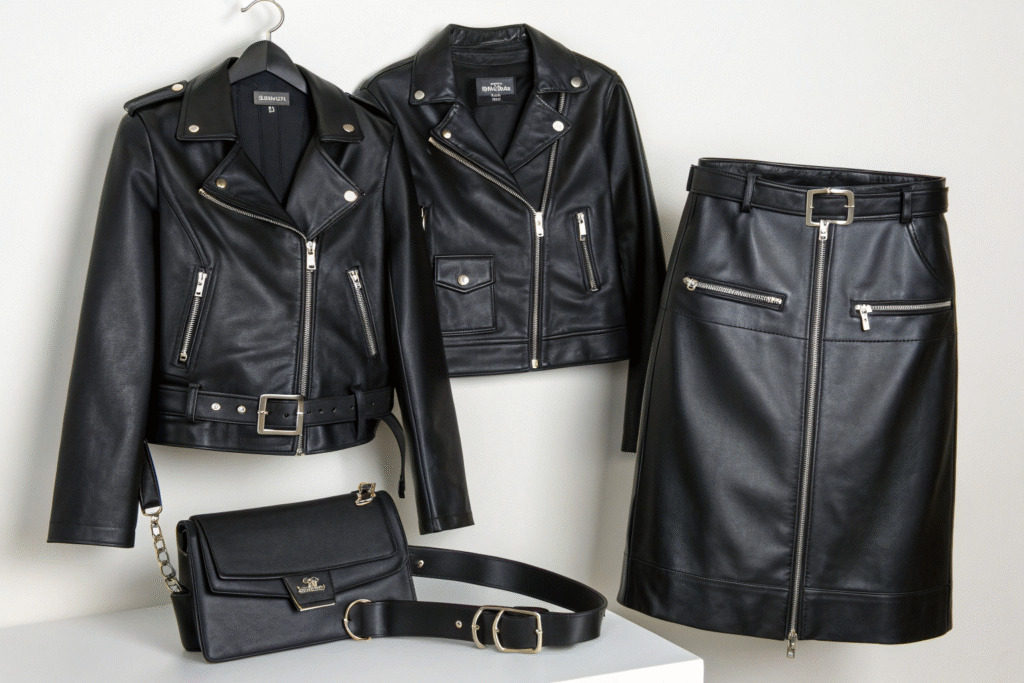
Is PVC leather bad for the environment?
The environmental impact of PVC is its most significant drawback. The production process involves chlorine and plasticizers like phthalates, which can be harmful to the ecosystem. A major concern is that PVC is not biodegradable; it can persist in landfills for hundreds of years. When incinerated, it can release toxic dioxins. While newer REACH-compliant formulations aim to reduce these hazards, the environmental footprint of PVC remains a critical issue for eco-conscious brands. The industry is actively seeking safer alternatives, but the legacy of traditional PVC production still influences its reputation.
How durable is PVC leather for daily wear?
In terms of pure physical endurance, PVC leather performs very well. It is highly resistant to scraping, tearing, and moisture, which contributes to a long lifespan for the garment. However, this durability comes with trade-offs. The material has very little breathability, which can make it uncomfortable to wear for extended periods, as it doesn't allow air or moisture vapor to pass through. Over time, the plasticizers in PVC can migrate to the surface, causing the material to become stiff and eventually crack. This is less of a problem with high-quality PVC blends but is a common failure point in cheaper versions.
Why is PU faux leather popular for clothing?
The demand for more sophisticated and comfortable synthetic leather has propelled PU to the forefront of apparel design. From high-fashion runways to everyday sportswear, PU leather offers a balance of performance, aesthetics, and a better environmental profile that resonates with modern brands and consumers.
PU leather's popularity stems from its superior ability to replicate the look and feel of genuine leather. It is significantly softer and more flexible than PVC, allowing it to drape beautifully on the body, which is essential for form-fitting garments like pants, dresses, and blouses. This flexibility also translates to greater comfort for the wearer. Crucially, PU is a porous material, meaning it offers some breathability, allowing air and moisture to escape. This prevents the clamminess often associated with PVC, making PU a more practical choice for a wider range of clothing applications and longer wear.
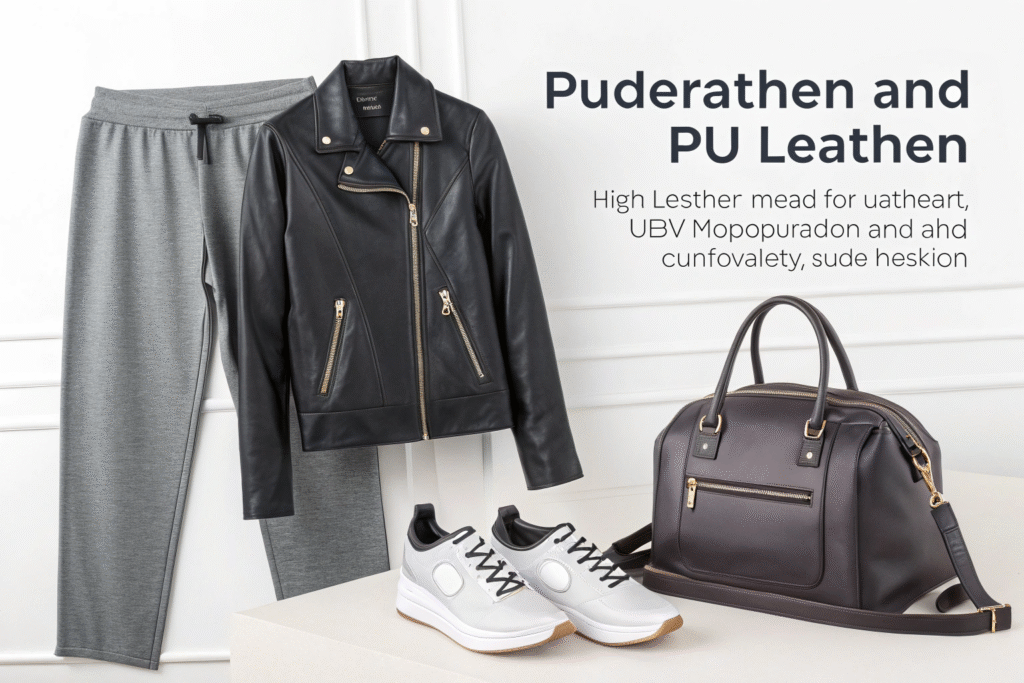
Does PU leather offer better design versatility?
Absolutely. The manufacturing process of PU leather allows for immense design flexibility. It can be easily embossed with a wide variety of grains, from calfskin to ostrich, and accepts dyes and prints more effectively than PVC, resulting in a richer, more authentic appearance and a broader color palette. This versatility enables designers to create unique textures and finishes that are difficult to achieve with PVC. Furthermore, advancements in technology have led to the development of high-performance PU coatings that are waterproof yet breathable, expanding its use into activewear and technical outerwear, blurring the lines between fashion and function.
Is PU leather a more ethical choice?
While no synthetic leather is entirely eco-friendly, PU is generally considered a more environmentally responsible option compared to PVC. The production of PU does not require chlorine, and it avoids the use of phthalates. Modern innovations have also introduced bio-based polyurethanes derived from sources like corn oil, further reducing reliance on fossil fuels. Many PU fabrics are also recyclable. When you partner with a supplier like Fumao Textiles, which invests in green manufacturing processes, you can source PU leathers that align with global sustainability standards and cater to the growing market of conscious consumers.
How to choose between PVC and PU for your designs?
Making the final decision between PVC and PU requires a practical evaluation of your project's specific needs. There is no one-size-fits-all answer; the best choice depends on the intended use, target price point, and brand values of your apparel line.
Your choice fundamentally comes down to the garment's purpose. For items that require a stiff structure, high gloss, and extreme durability against the elements—such as statement outerwear, protective gear, or cost-focused accessories—PVC is a strong contender. Conversely, for garments where comfort, drape, and a realistic leather aesthetic are paramount, such as tailored pants, blouses, or high-fashion dresses, PU is the unequivocally better choice. You must weigh factors like the desired hand feel, breathability requirements, and the overall brand experience you wish to deliver to your customer.
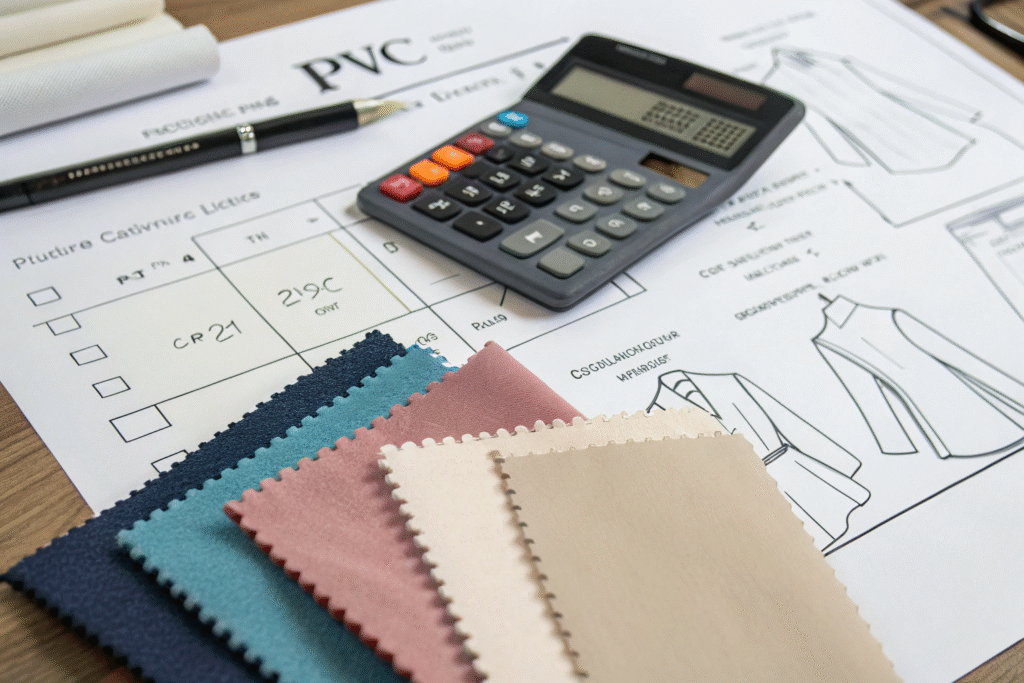
What questions should you ask your supplier?
To ensure quality and alignment with your standards, due diligence with your fabric supplier is key. Don't hesitate to ask critical questions about the material's composition and testing. Essential inquiries include:
| Question to Ask | Why It's Important |
|---|---|
| What is the base fabric? (e.g., polyester, cotton) | Affects drape, weight, and stability. |
| Are the products certified to Oeko-Tex or Reach standards? | Ensures safety and restricts harmful substances. |
| Can you provide technical data sheets for abrasion and colorfastness? | Verifies durability and quality for intended use. |
| What are the minimum order quantities (MOQs)? | Determines feasibility for your production scale. |
Asking for physical fabric swatches is non-negotiable. Feeling the material, testing its stretch, and examining the backing will give you more insight than any datasheet.
How does cost influence the decision?
Budget is always a decisive factor. PVC generally holds a clear advantage in terms of raw material cost, making it accessible for brands with very tight margins or those producing high-volume, trend-driven items. PU typically commands a higher price due to its more complex manufacturing process and superior properties. However, this initial cost difference should be evaluated against the perceived value of the final product. Using PU can allow you to position your brand in a premium segment, justifying a higher retail price based on enhanced comfort, quality, and design appeal.
What are the latest innovations in faux leather?
The synthetic leather industry is not static. Driven by consumer demand for sustainability and performance, exciting new technologies are emerging that push the boundaries of what faux leather can be. At Fumao, our R&D team is at the forefront of these developments.
The current innovation wave is dominated by bio-based and recycled materials. We are now seeing high-quality PU leathers made with polyols derived from corn, castor oil, and even algae. Another major trend is the use of recycled polyester as the base fabric for both PU and new-generation PVC, creating a circular economy solution. Beyond materials, advanced finishing techniques are creating hyper-realistic textures and performance features like self-healing surfaces (which smooth out minor scratches) and integrated smart textiles for a truly next-generation apparel experience.
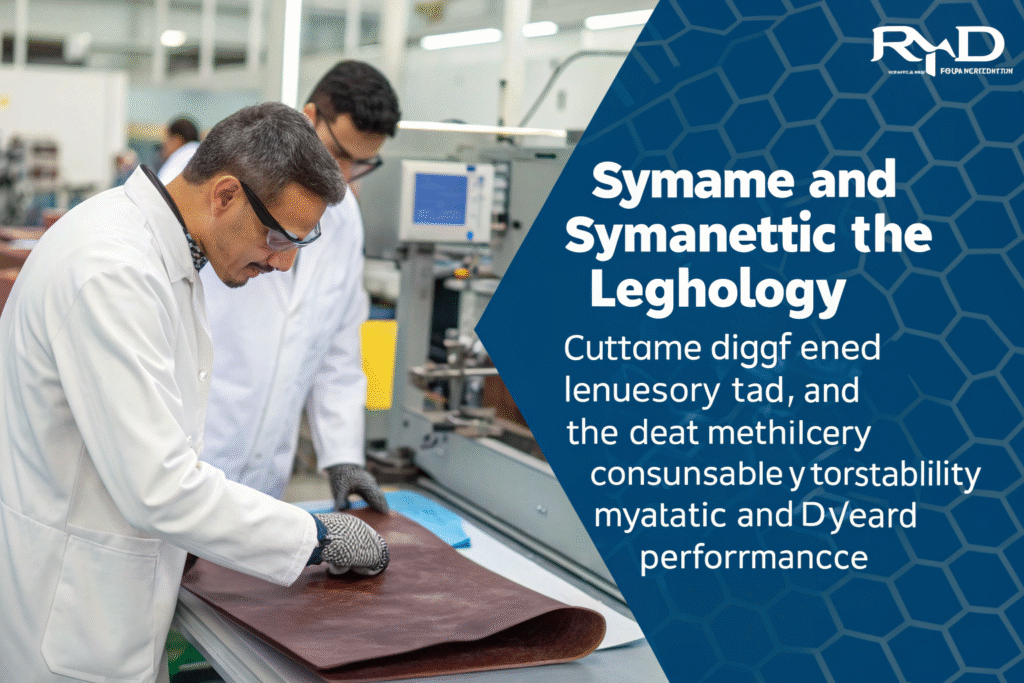
Are plant-based leathers the future?
Materials like Piñatex (from pineapple leaves), mushroom leather (Mylo), and cactus leather are capturing the industry's imagination. They represent a significant leap towards truly sustainable and cruelty-free alternatives. However, it's important to understand that most of these currently exist as niche materials with limited scale and higher costs. They often require a PU or PLA coating to achieve durability and usability in apparel. While they may not replace PU or PVC entirely in the immediate future, they are driving innovation and forcing the entire industry to rethink its raw materials, which is a very positive development.
How is performance being enhanced?
The functional aspect of faux leather is also evolving rapidly. Our CNAS-certified lab is working on integrating advanced properties directly into the fabric. This includes developing faux leathers with inherent moisture-wicking capabilities for activewear, enhanced UV resistance for outdoor apparel, and even temperature-regulating phases. These are not just concept fabrics; they are becoming commercially viable options for brands that want to merge fashion with high technical performance, opening up new categories for synthetic leather applications beyond traditional fashion.
Conclusion
Choosing between PVC and PU faux leather is a critical decision that directly impacts the quality, comfort, and market positioning of your apparel. PVC offers rugged durability and a low cost, while PU provides superior softness, breathability, and a more realistic leather aesthetic, making it generally the preferred choice for a wide range of clothing. The industry is rapidly evolving with bio-based and high-performance innovations, offering even more possibilities for creative and sustainable design.
Ultimately, the best choice depends on your specific design vision, performance requirements, and brand values. By understanding the core differences and asking the right questions, you can confidently select the material that will make your next collection a success. If you're ready to explore high-quality, custom-developed PVC or PU faux leather for your brand, we are here to support you every step of the way.
We invite you to leverage our 20 years of expertise in fabric development and sourcing. Let's collaborate to create exceptional apparel that your customers will love. For a personalized consultation and to discuss your specific fabric needs, please contact our Business Director, Elaine, at elaine@fumaoclothing.com. We look forward to helping you weave your vision into reality.

